You searched for: Ghettos
<< Previous | Displaying results 351-400 of 1235 for "Ghettos" | Next >>
-
Warsaw (Abridged Article) - Photographs
Media EssayDuring World War II, the Germans established ghettos where Jews were forced to live in miserable conditions. In October 1940, a ghetto was established in Warsaw, Poland. Before the war, Warsaw had the largest Jewish community in Europe. At its hei...
-
Warsaw (Abridged Article) - Animated Map/Map
Media EssayDuring World War II, the Germans established ghettos where Jews were forced to live in miserable conditions. In October 1940, a ghetto was established in Warsaw, Poland. Before the war, Warsaw had the largest Jewish community in Europe. At its hei...
-
Theresienstadt ration card issued to Alice Winternitz (front)
DocumentThe Nazis made Jewish leaders responsible for the distribution of food supplies and other necessities allotted to ghetto residents. Due to grossly inadequate supplies, the Juedische Selbstverwaltung Theresienstadt (Jewish Administration of Theresienstadt) issued ration cards such as this one. The columns count points allotted for various goods identified by letters of the alphabet. Boxes were removed as residents exchanged points for food or other goods. This view shows the front of the card. Issued in the…
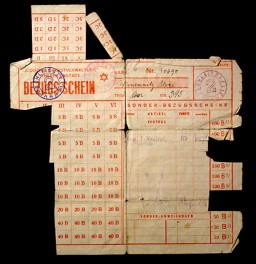
-

-

-

-
Shmuel David Bursztyn
ID CardRaised by Yiddish-speaking, religious Jewish parents in the town of Pultusk in central Poland, Shmuel married in the late 1890s and moved with his wife, Gisha, to the city of Warsaw. Shmuel owned and operated a bakery on Zamenhofa Street. In 1920 the Bursztyns and their eight children moved to larger quarters in a two-bedroom apartment at 47 Mila Street in the Jewish section of the city. 1933-39: By 1939 six of Shmuel's children were grown and on their own. Only his youngest son and daughter still lived…
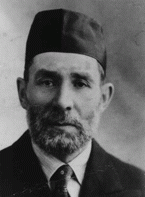
-
Pawel Wos
ID CardPawel, a Roman Catholic, fled to Danzig, Germany, in 1914 to avoid conscription in the Russian army. Since Germany and Russia were at war, Pawel was arrested by the Germans as an enemy alien and sent to work on a farm in northern Germany. He met Anna Szachowska there, and they married in 1918. The couple moved to Warsaw where they raised 4 children. In 1930 Pawel opened a textile business. 1933-39: Despite the Depression, Pawel's business prospered and they expanded their operations. In 1938 some friends…
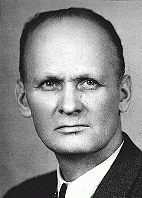
-
"The Three Musketeers"
PhotoPhotograph of "The Three Musketeers" —three school friends in the Lodz ghetto. Left: Lola Tenenbaum Rapoport, who survived with her husband. Center: Niusia Friedman, who was killed in Auschwitz. Lola sent this photo to Blanka Rothschild from Australia. Blanka (right) says "It's my only memento of the ghetto." With the end of World War II and collapse of the Nazi regime, survivors of the Holocaust faced the daunting task of rebuilding their lives. With little in the way of financial resources and few, if…
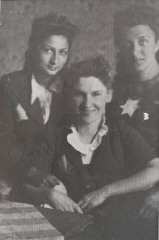
-
Metal box used to hide contents of the Oneg Shabbat archives
ArtifactOne of the ten metal boxes in which portions of the Ringelblum Oneg Shabbat archives were hidden and buried in the Warsaw ghetto. The boxes are currently in the possession of the Jewish Historical Institute in Warsaw.

-
Metal box that held contents of the Oneg Shabbat archive
ArtifactOne of the ten metal boxes in which portions of the Oneg Shabbat archive were hidden and buried in the Warsaw ghetto. The boxes are currently in the possession of the Jewish Historical Institute in Warsaw. This view is of an open box without the lid.
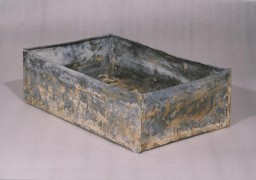
-

-

-

-

-
Captured Jewish resistance fighters in Warsaw
PhotoJewish resistance fighters who were captured by SS troops during the Warsaw ghetto uprising. Warsaw, Poland, April 19-May 16, 1943. The original German caption reads: "These bandits offered armed resistance."

-
Hersh Gordon
ID CardHersh was born to a Jewish family in Kovno, the capital of independent Lithuania. Hersh's father was a mechanic in a textile factory, and his mother had worked as a hat designer until he was born. The Gordons lived on the first floor of Hersh's grandfather's apartment building. Eight-year-old Hersh was in the third grade at public elementary school. 1933-39: In the summers Hersh and his mother would go to his Aunt Ettel and Uncle Abraham in a small town not far away. They'd take a boat down the river to…
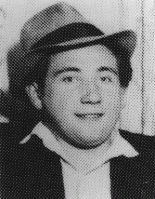
-
Leon Kusmirek
ID CardLeon was the oldest of two boys born to a Jewish family in Zgierz, a central Polish town in the heart of Poland's textile producing region. The family lived at 15 Konstantynowska Street. Leon's father worked at a textile factory. At age 7, Leon began attending public school in the morning and religious school in the afternoon. 1933-39: On Friday, September 1, 1939, Leon's mother had just returned from the market when the family saw German planes. On Sunday they flew over again, lower, panicking the city.…
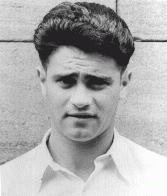
-
Jewish partisan activity in eastern Europe, 1942-1944
MapDespite enormous obstacles, many Jews throughout German-occupied Europe attempted armed resistance against the Germans. Individual Jews or groups of Jews engaged in planned or spontaneous opposition to the Germans and their allies. Jewish partisans were especially active in the east, where they fought the Germans from bases established behind the front lines in forests and ghettos. Because antisemitism was widespread there, they found little support among the surrounding population. Even so, as many as…

-
Madeline Deutsch describes ghettoization in Hungary
Oral HistoryMadeline was born into a middle class family in an area of Czechoslovakia that was annexed by Hungary in 1938-1939. Her father worked out of their home and her mother was a homemaker. Madeline attended high school. In April 1944 her family was forced into a Hungarian ghetto. The family lived in the ghetto for two weeks before being transported to Auschwitz. Madeline and her mother were separated from her father and older brother. Neither her father nor brother survived the war. A week after arriving in…
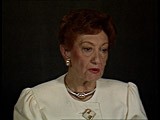
-
Map of Theresienstadt from an original document
PhotoMap of Theresienstadt from an original document (1942-1945) and mounted in an album assembled by a survivor.

-
Baruch Aaron Szabasson
ID CardBaruch was known by his family and friends as Buzek. He came from the east central Polish town of Kozienice. Kozienice was a popular vacation spot situated near lakes and a birch forest. Baruch's father worked in the lumber business. 1933-39: Baruch attended public school, and in the afternoons he also went to Jewish religious school. On Friday nights for the sabbath, Baruch would go to his grandparents' house, where his relatives would gather to visit with one another. Baruch would run to his grandfather…
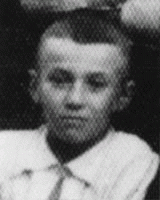
-
Theresienstadt: Final Weeks, Liberation, and Postwar Trials
ArticleThe Theresienstadt camp-ghetto existed from 1941 to 1945. Learn about its final weeks, liberation, and the postwar trials of SS commandants and other staff.
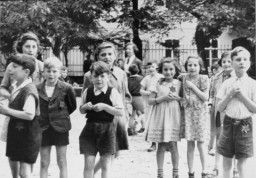
-
Abraham Lewent
ID CardAbraham was born to a Jewish family in the Polish capital of Warsaw. His grandfather owned a clothing factory and retail store, which his father managed. Abraham's family lived in a Jewish section of Warsaw and he attended a Jewish school. Warsaw's Jewish community was the largest in Europe, and made up nearly one-third of the population of the city. 1933-39: After the bombardment of Warsaw began on September 8, 1939, Abraham's family had little to eat. The stores had been reduced to rubble; they had no…
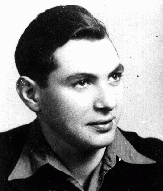
-
Hela Szabszevicz
ID CardHela was born in the industrial city of Lodz. She grew up speaking Polish and Yiddish, and learned German and Russian at secondary school. After completing school she married, and moved with her husband to a house on her father-in-law's large estate in the nearby town of Ozorkow. Hela was active in planning events for Jewish organizations. She and her husband, Israel, had two daughters. 1933-39: After German troops occupied Ozorkow in 1939, Hela and her family were forced out of their home and moved in…

-
Szlamach Radoszynski
ID CardSzlamach was one of six children born to Yiddish-speaking, religious Jewish parents. Szlamach's father was a peddler, and the Radoszynski family lived in a modest apartment in Warsaw's Praga section on the east bank of the Vistula River. After completing his schooling at the age of 16, Szlamach apprenticed to become a furrier. 1933-39: During the 1930s Szlamach owned a fur business. Despite the Depression, he was hoping the economy would turn around so that he could make enough money to move into his own…

-
Jozef Rosenblat
ID CardJozef, also known as Josel, was one of six children born to Yiddish-speaking, religious Jewish parents in the town of Zvolen in central Poland. Jozef became a shoemaker and married a Jewish neighbor. After living in Warsaw for several years, Jozef and his wife, Hannah, settled in the industrial city of Radom near their hometown. There, they raised their three sons. 1933-39: Jozef's three sons finished school and went to work at a young age. Jozef had stopped making shoes himself and was cutting and…
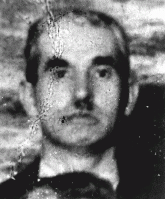
-
Adam Czerniakow, chairman of the Jewish council in Warsaw
Film[This video is silent] German forces entered Warsaw in September 1939. The next month, they ordered the establishment of a Jewish council (Judenrat) in the city. They chose Adam Czerniakow, a member of Warsaw's old Jewish Community Council, to lead it. Here, for German newsreels, a German propaganda company stages a meeting between Czerniakow and petitioners from the ghetto. The Germans expected Czerniakow to implement German orders, including demands for forced labor and confiscations of Jewish-owned…
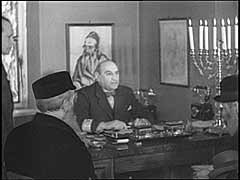
-
Pawel Zenon Wos
ID CardPawel was the oldest of four children born to Roman Catholic parents in Poland's capital of Warsaw. Pawel's father had worked for the Polish merchant marine before starting his own textile business in 1930. The family moved to a comfortable apartment near the Royal Castle and the Vistula River. Pawel excelled in sports, including basketball and tennis. His favorite sport was rowing. 1933-39: In May 1939 Pawel became an army reserve officer and went to training camp near Augustow. On the morning of…

-
Fritz Alexander Rosenberg
ID CardFritz was one of three sons born to a Jewish family in the university city of Goettingen, where the Rosenbergs had lived since the 1600s. His father owned a linen factory. Fritz worked as a salesman there, and later he and his brothers inherited the business. In 1913 Fritz married Else Herz. By the early 1920s they had two sons and a daughter. 1933-39: In 1933 the Nazis came to power in Germany. A year later the Rosenbergs' factory was seized and three Nazis came to the family's home. An officer set a gun…

-
Inge Auerbacher
ID CardInge was the only child of Berthold and Regina Auerbacher, religious Jews living in Kippenheim, a village in southwestern Germany near the Black Forest. Her father was a textile merchant. The family lived in a large house with 17 rooms and had servants to help with the housework. 1933-39: On November 10, 1938, hoodlums threw rocks and broke all the windows of Inge's home. That same day police arrested her father and grandfather. Inge, her mother and grandmother managed to hide in a shed until it was…
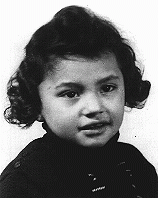
-
Fela Perznianko
ID CardFela was the older of two children born to Jewish parents living in Zakroczym, a town on the Vistula River near Warsaw. Her father was a respected attorney. As a young woman, Fela worked as a hat designer in Warsaw, until she married Moshe Galek when she was in her late 20s. She moved to the nearby town of Sochocin, where her husband owned a pearl-button factory. Fela and Moshe raised four daughters. 1933-39: In 1936 the Galeks moved to Warsaw, attracted by the city's cultural life. When Germany invaded…

-
Ernest G. Heppner
ID CardErnest was one of three children born to a Jewish family in the commercial city of Breslau, which had one of the largest Jewish communities in Germany. His father, a World War I veteran, owned a factory that made matzah, the unleavened bread used during the Jewish holiday of Passover. Ernest was 12 when Hitler took power in 1933. 1933-39: Ernest often got in trouble at school because people called him names. "Christ-killer" and "your father kills Christian babies for Passover" were common taunts. Many…
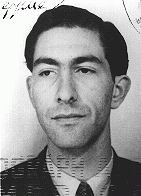
-
Irmgard Rosenberg
ID CardIrmgard was one of three children born to a Jewish family in the famous university city of Goettingen. The city had a small Jewish population, and only one synagogue. Irmgard's father, with his two brothers, owned a linen factory that had been founded by Irmgard's grandfather. Irmgard attended public school in the city. 1933-39: With the onset of the Depression in the 1930s, the family's factory went into decline. When the Nazis came to power in 1933, they confiscated the Rosenbergs' factory. Later, the…
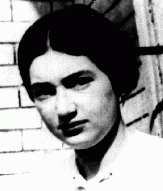
-
Chinka Schwarzbard Felman
ID CardOne of six children, Chinka was raised in a Yiddish-speaking, religious Jewish family in the town of Ostrow Mazowiecka, where her father was a wine maker. In 1910 she married Ephraim Isaac Felman, and a few years later the couple moved to Sokolow Podlaski, where Chinka helped her husband run a grain business. The Felmans had seven children, two of whom died in infancy. 1933-39: Chinka's husband died in 1935, and she took over the grain business with the help of her children. That same year, her oldest…

-
Children's painting showing Jews celebrating Hannukah
PhotoChildren's painting showing of Jews celebrating Hannukah. This painting, which was probably drawn by either Michael or Marietta Grunbaum, was made in Theresienstadt and then pasted into a scrapbook by their mother shortly after liberation. Theresienstadt, Czechoslovakia, ca. 1943.
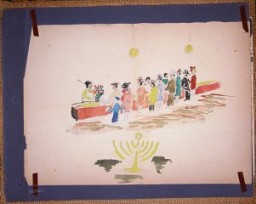
-
Cookbooks and Recipes
ArticleEach cookbook or recipe in the Museum’s collection tells a story. Learn more about the significance of these documents during the Holocaust.
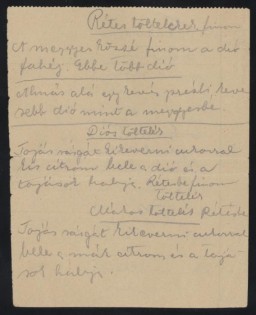
-
Abraham Lewent describes hiding during a raid in which his mother and sisters were seized for deportation from Warsaw to Treblinka
Oral HistoryLike other Jews, the Lewents were confined to the Warsaw ghetto. In 1942, as Abraham hid in a crawl space, the Germans seized his mother and sisters in a raid. They perished. He was deployed for forced labor nearby, but escaped to return to his father in the ghetto. In 1943, the two were deported to Majdanek, where Abraham's father died. Abraham later was sent to Skarzysko, Buchenwald, Schlieben, Bisingen, and Dachau. US troops liberated Abraham as the Germans evacuated prisoners.
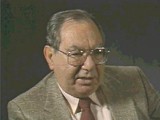
-
Deportation from Krakow
PhotoDeportation from the Krakow ghetto at the time of the ghetto's liquidation. Krakow, Poland, March 1943.
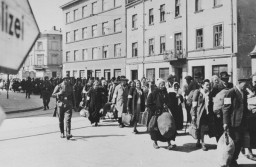
-
Jewish Councils
Media EssayThe Germans established Jewish Councils (Judenraete) in the ghettos during World War II. Jewish Councils were required to implement Nazi policies in the ghettos. This role meant impossible moral dilemmas. Council members had to decide wheth...
-
Minsk - ID Cards
Media EssayThe Minsk ghetto was established in July 1941 shortly after German forces occupied the city. These personal histories describe the experiences of Jewish men, women, and children who were forced into the Minsk ghetto.
-
Lithuanian rescuer Ona Simaite
PhotoLithuanian librarian Ona Simaite took food to Jews in the Vilna ghetto, helped hide many Jews outside the ghetto, and saved valuable Jewish literary and historical materials. Vilna, 1941.

-
Avraham Tory stands with Zvi Brik (left)
PhotoSecretary of the Kovno ghetto Jewish council Avraham Tory stands with Zvi Brik (left), workshop administrator, in the cemetery of the Kovno ghetto. Kovno, Lithuania, 1943.
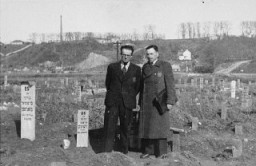
-
Our Springtime
SongMordecai Gebirtig, Yiddish folk poet and songwriter, was born in 1877 in Krakow, Poland. Gebirtig was confined in the Krakow ghetto in March 1942. He wrote "Our Springtime" in April 1942. The lyrics describe the bleakness and despair of ghetto life.
